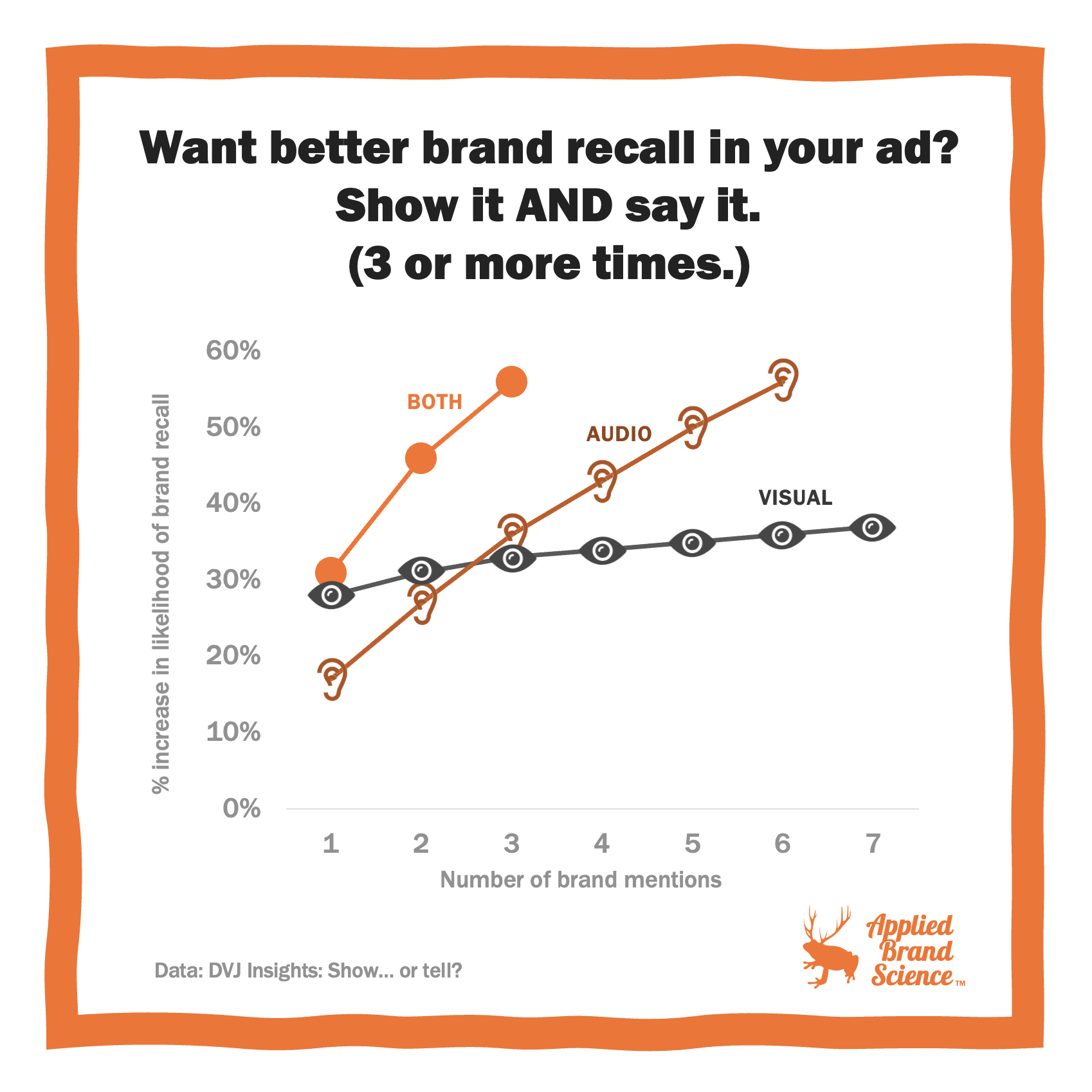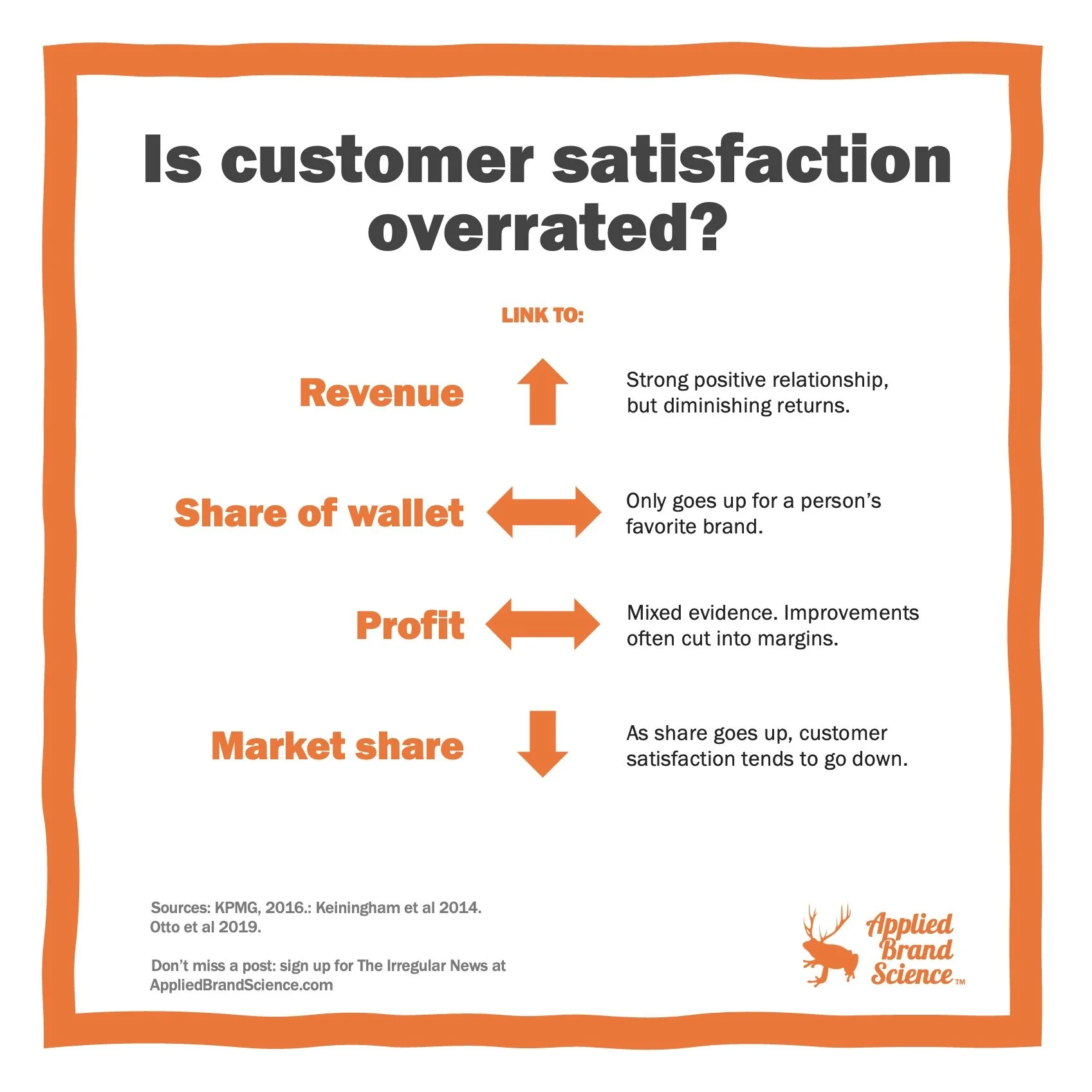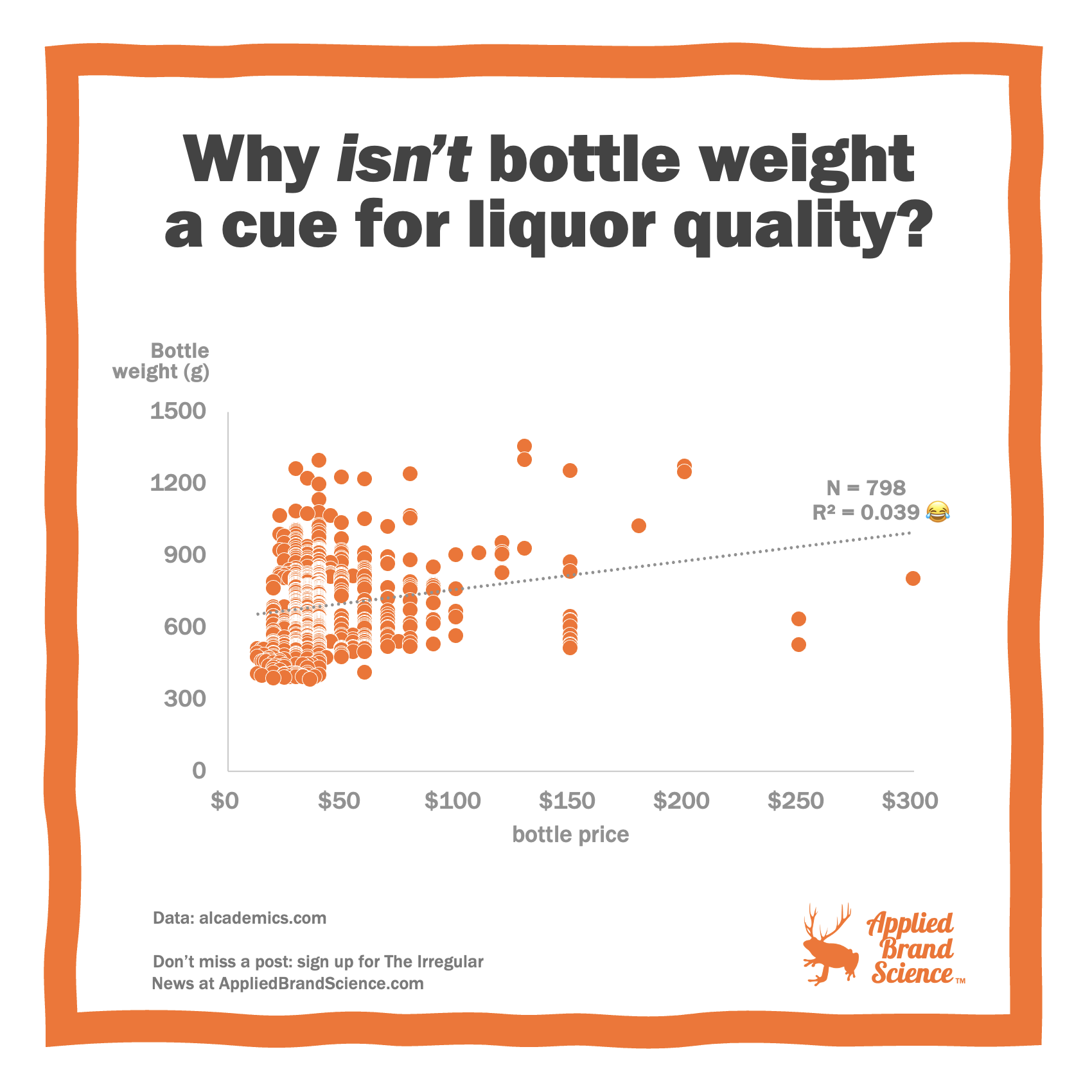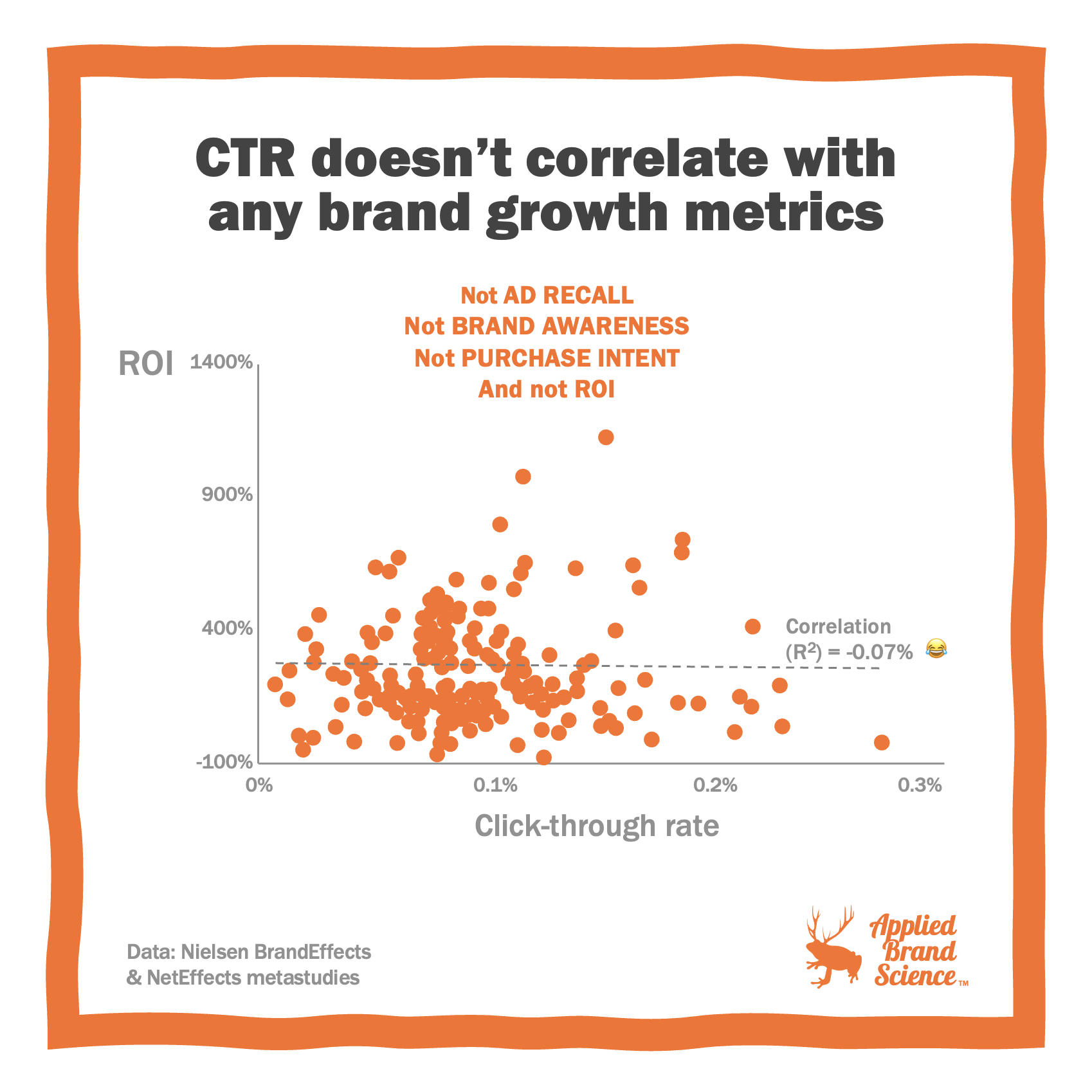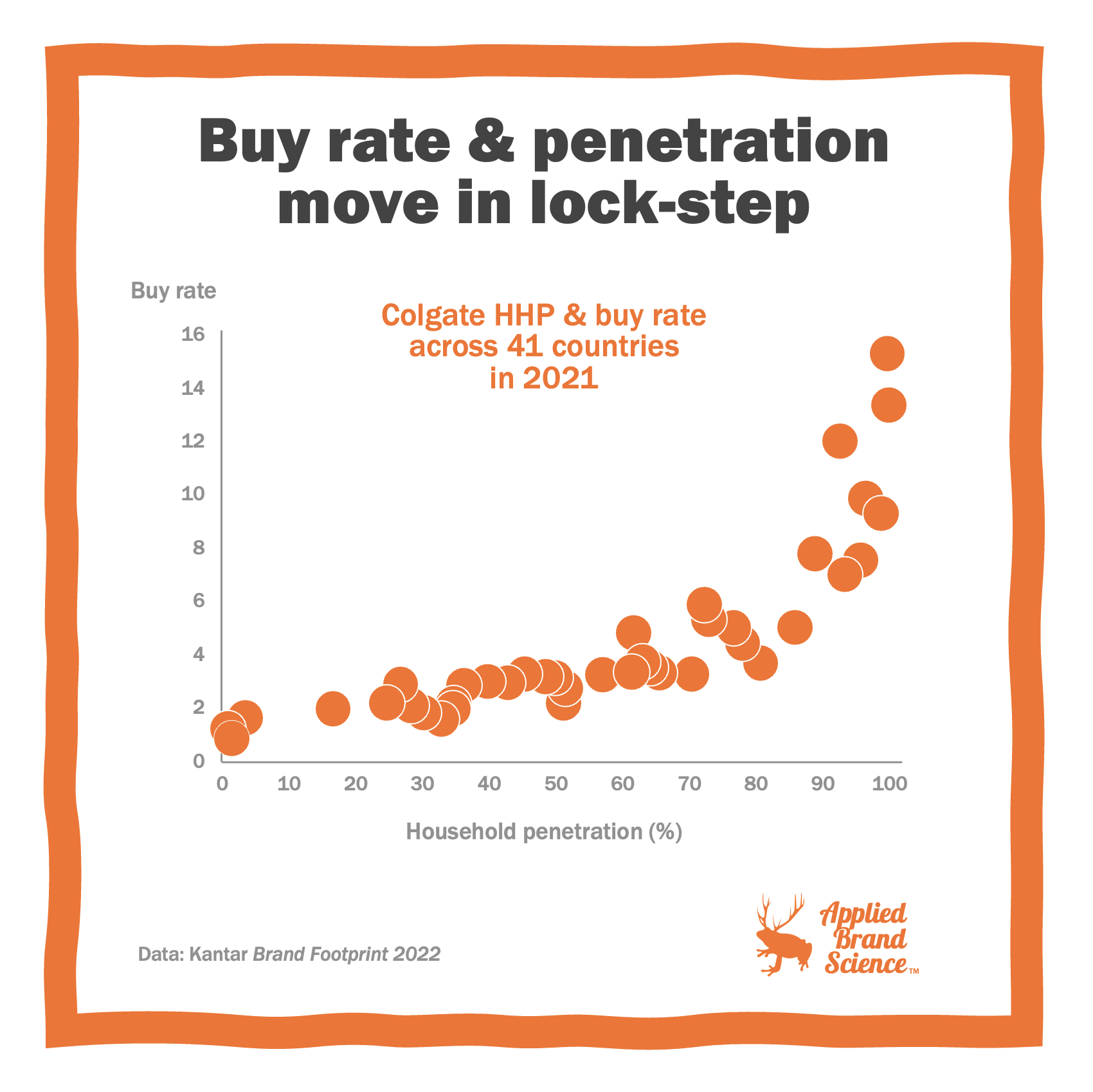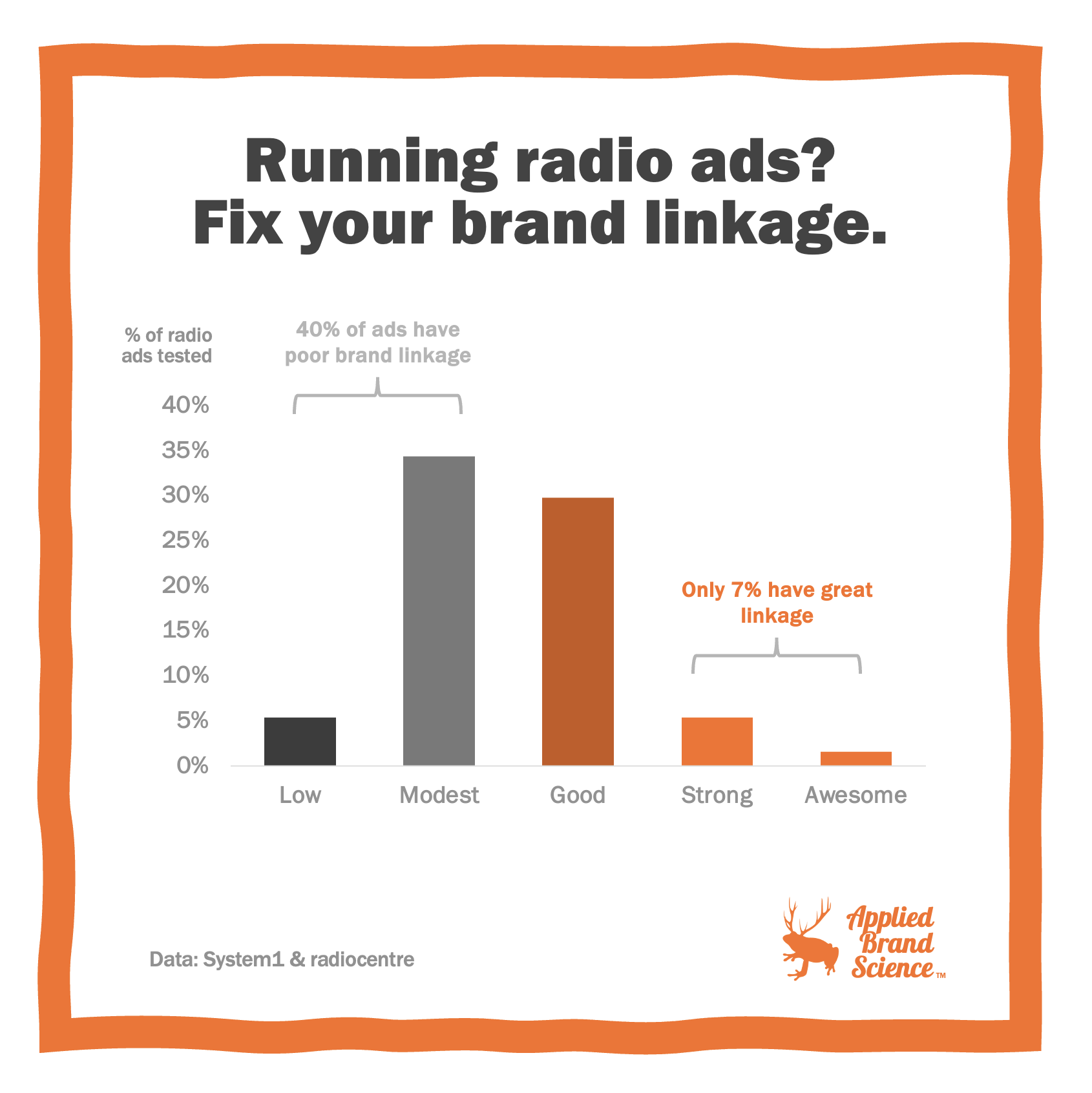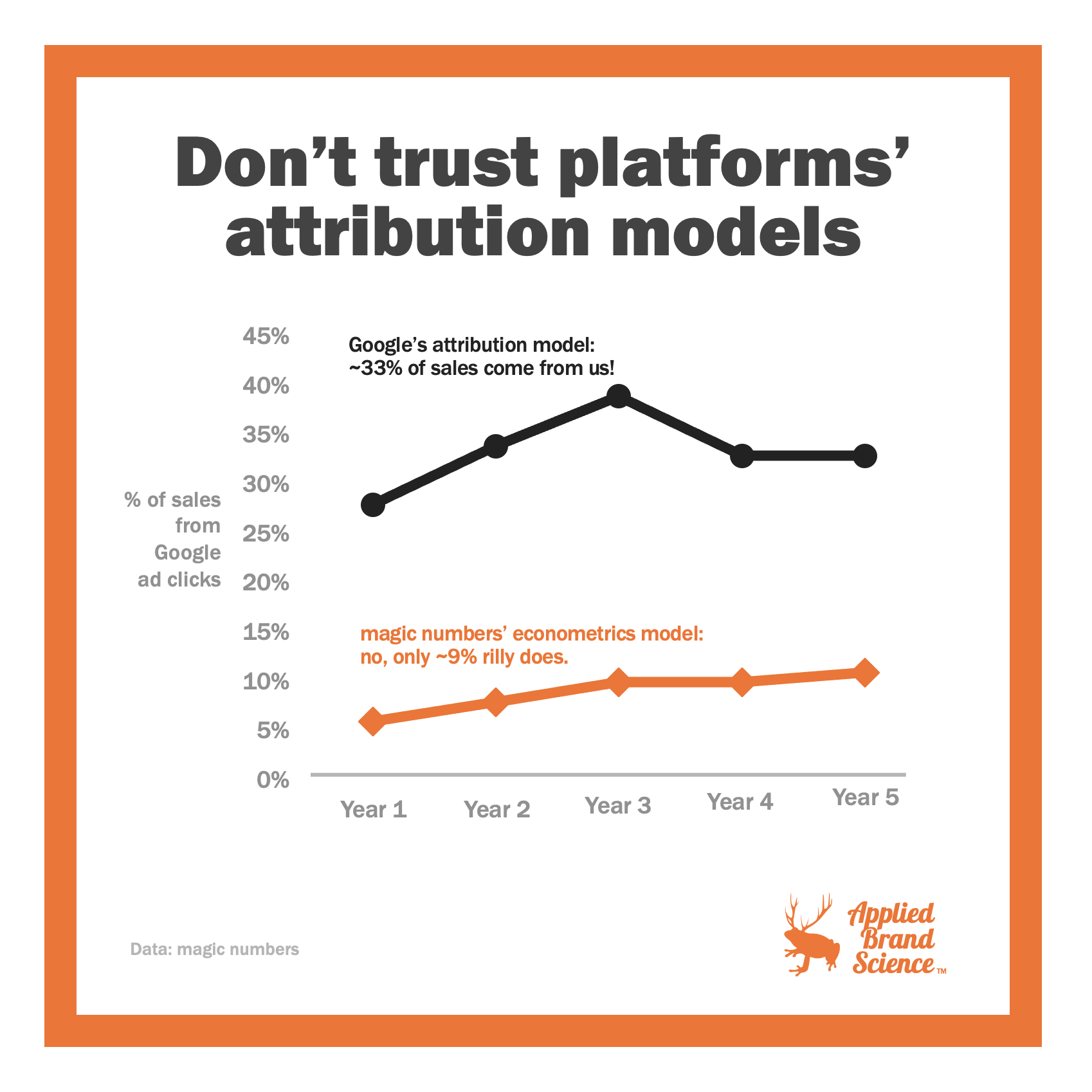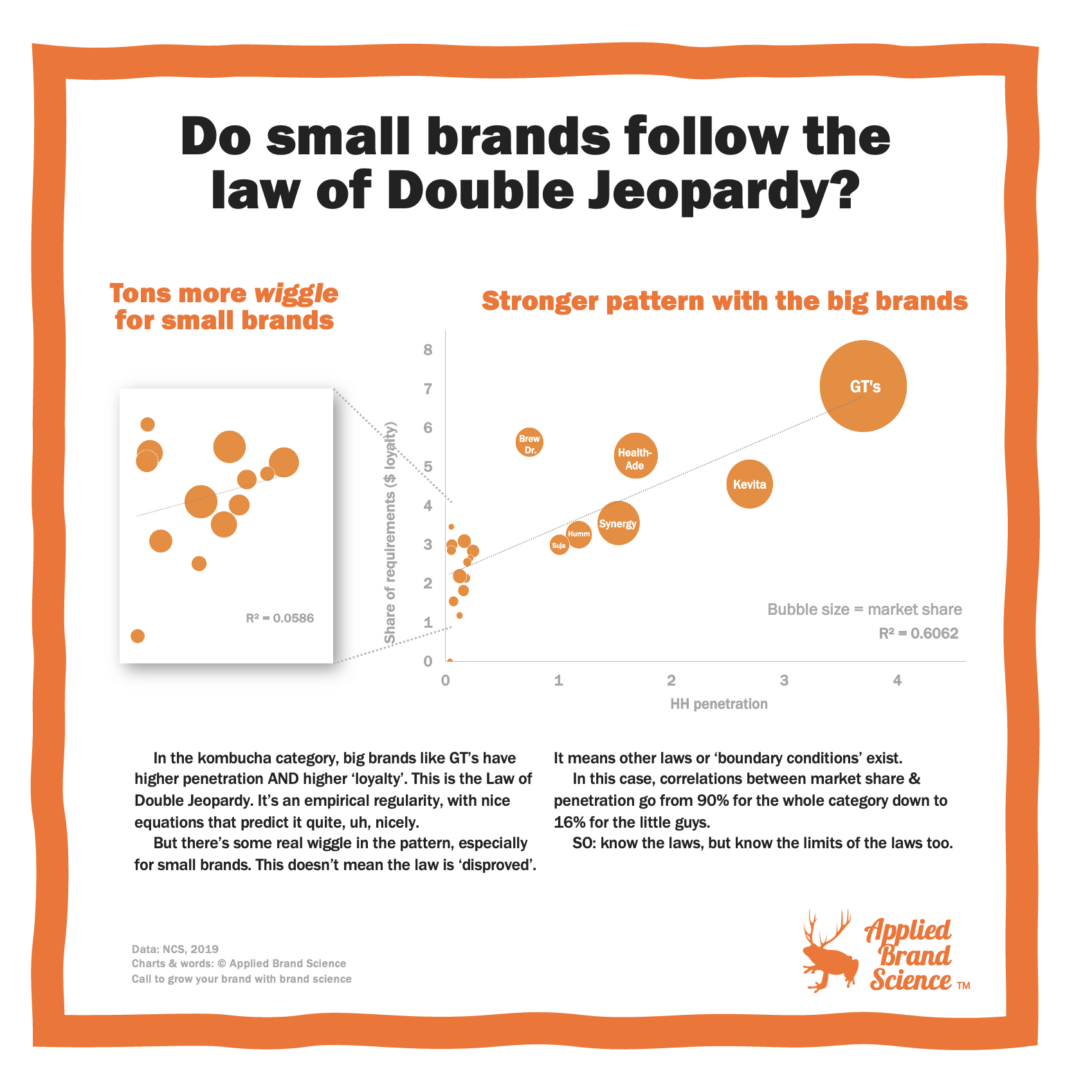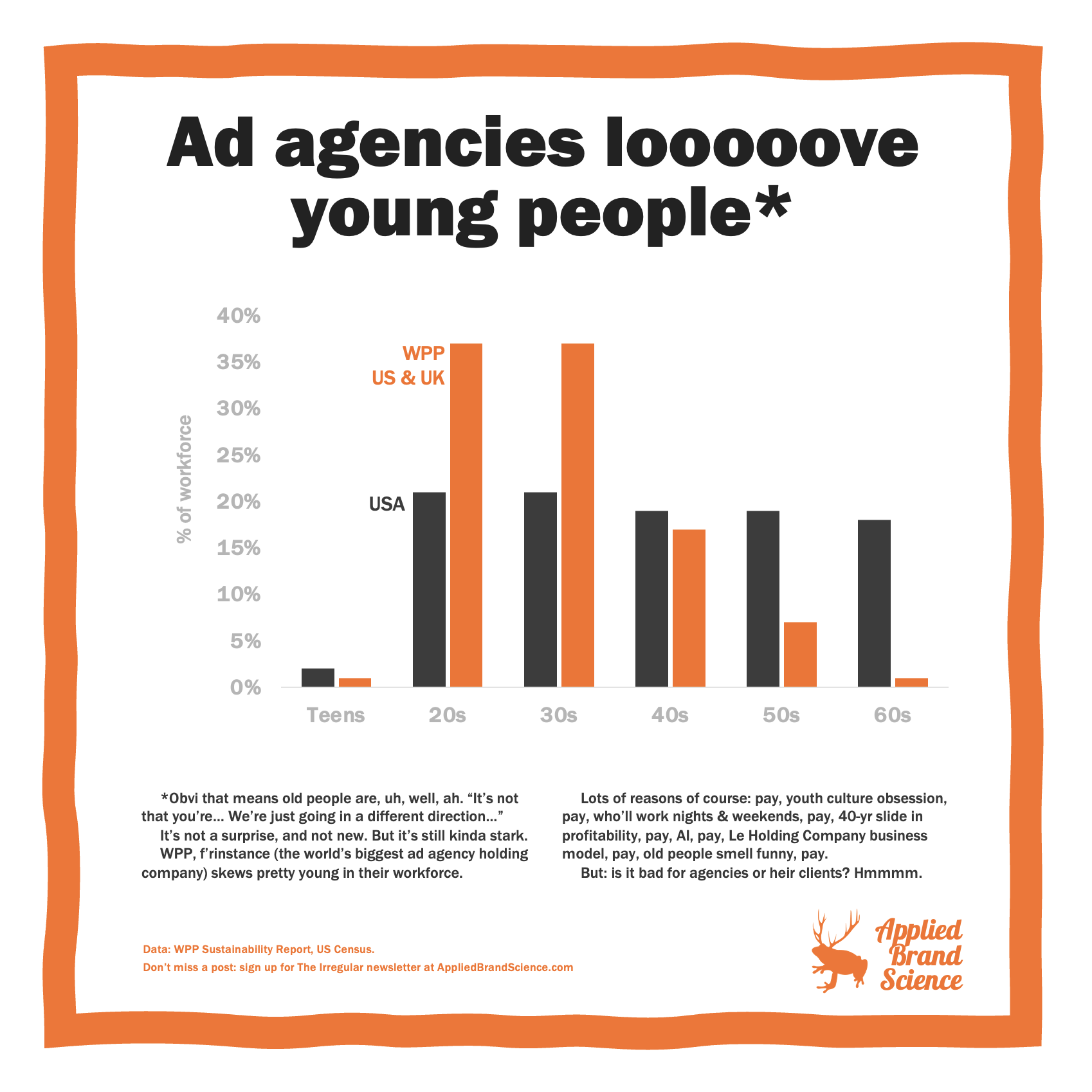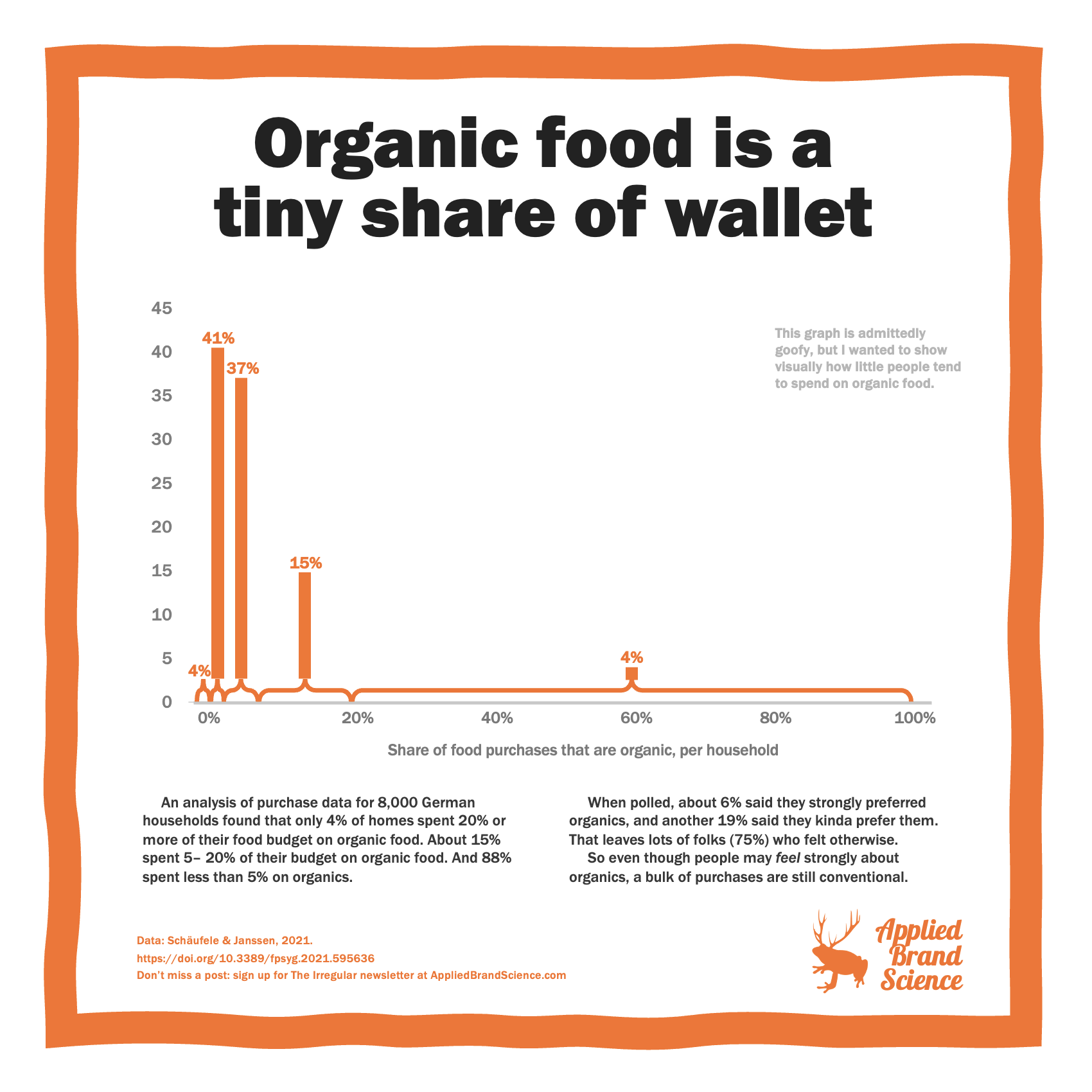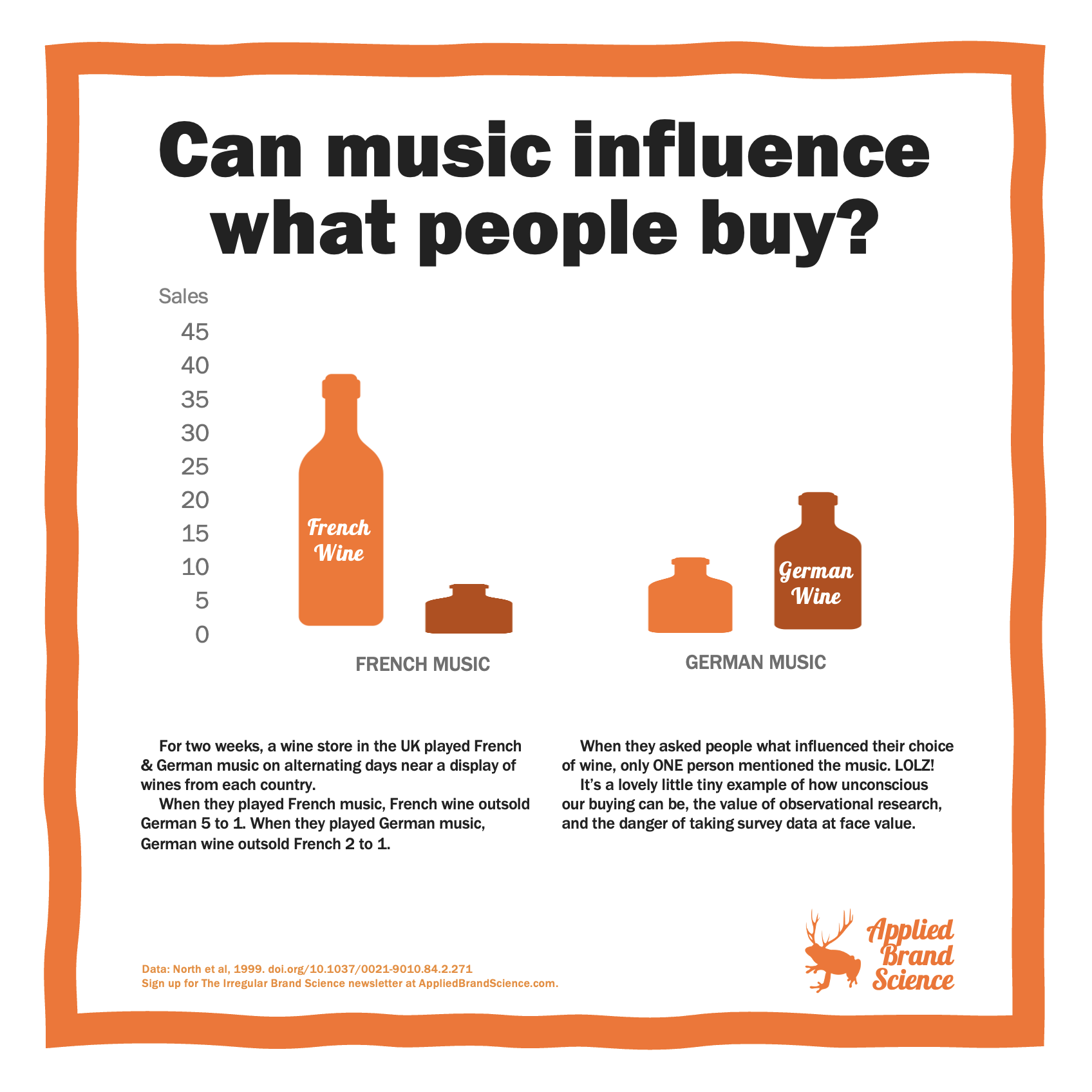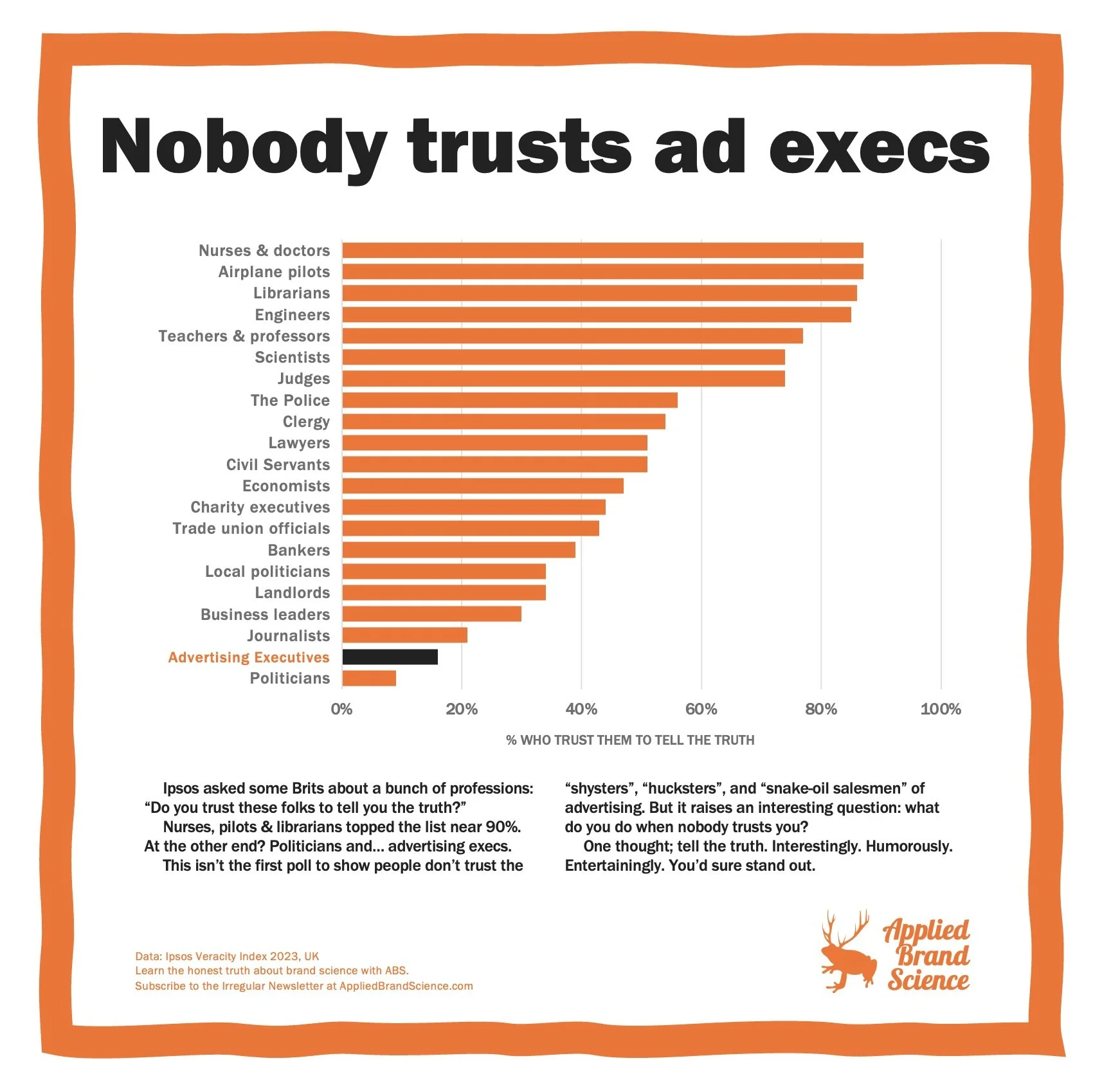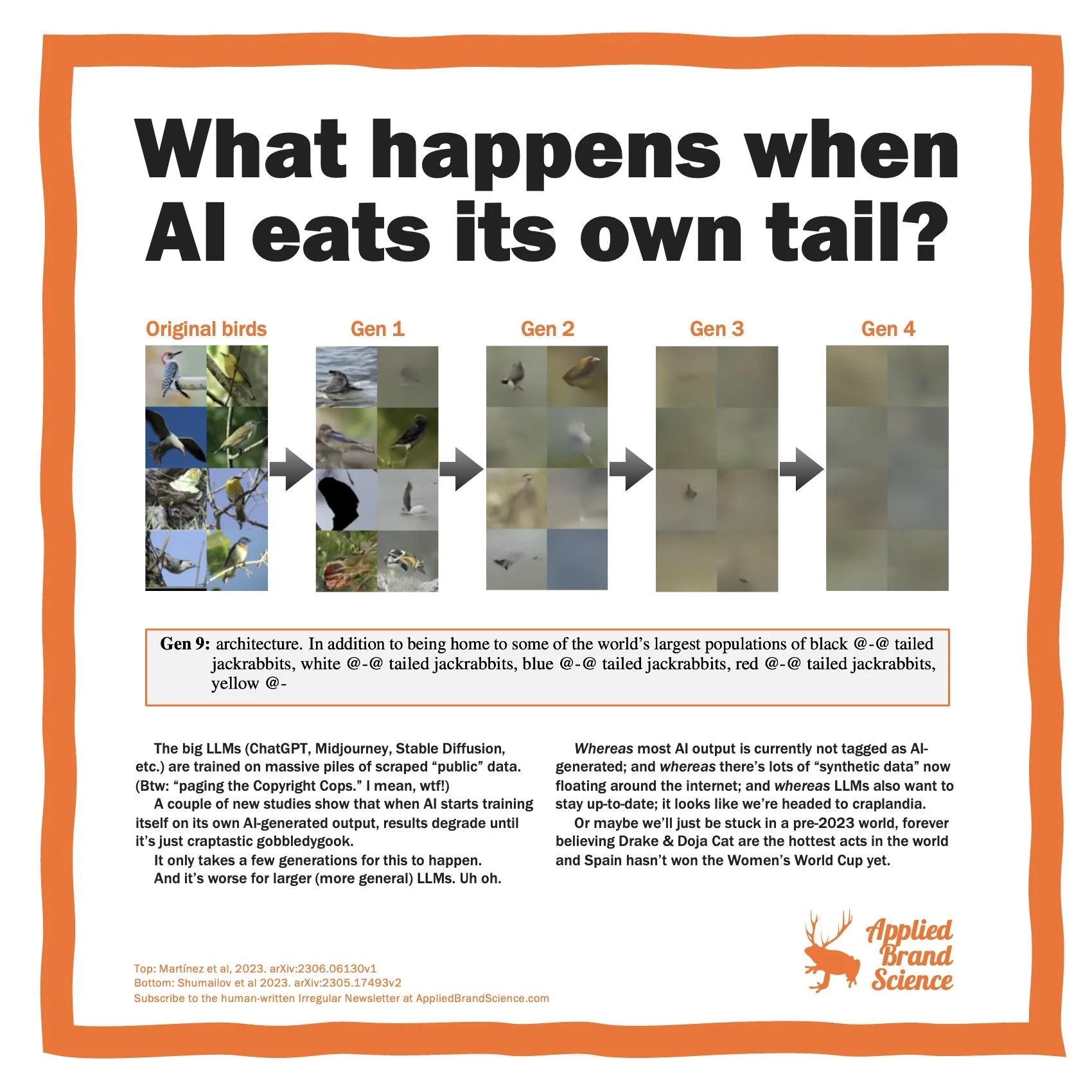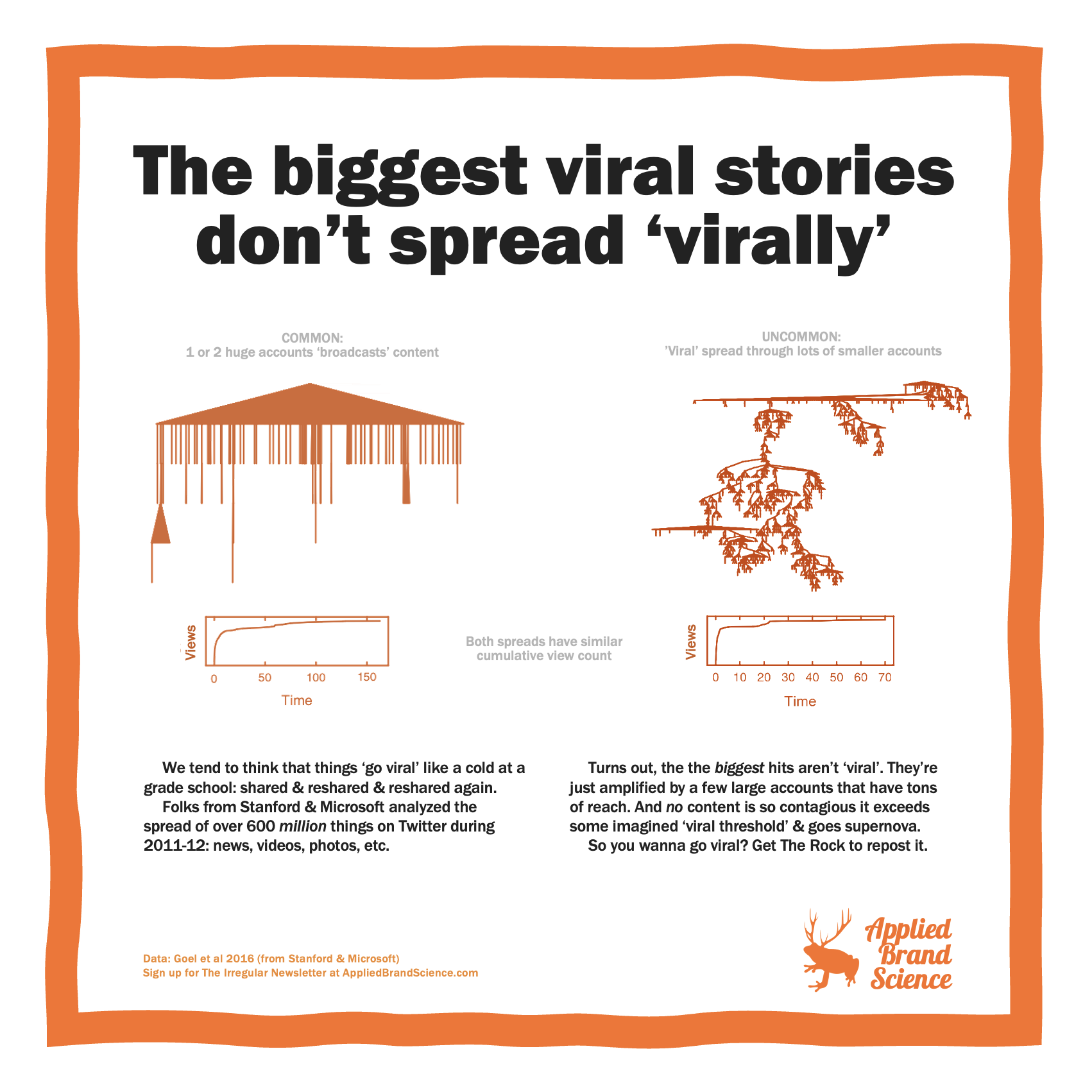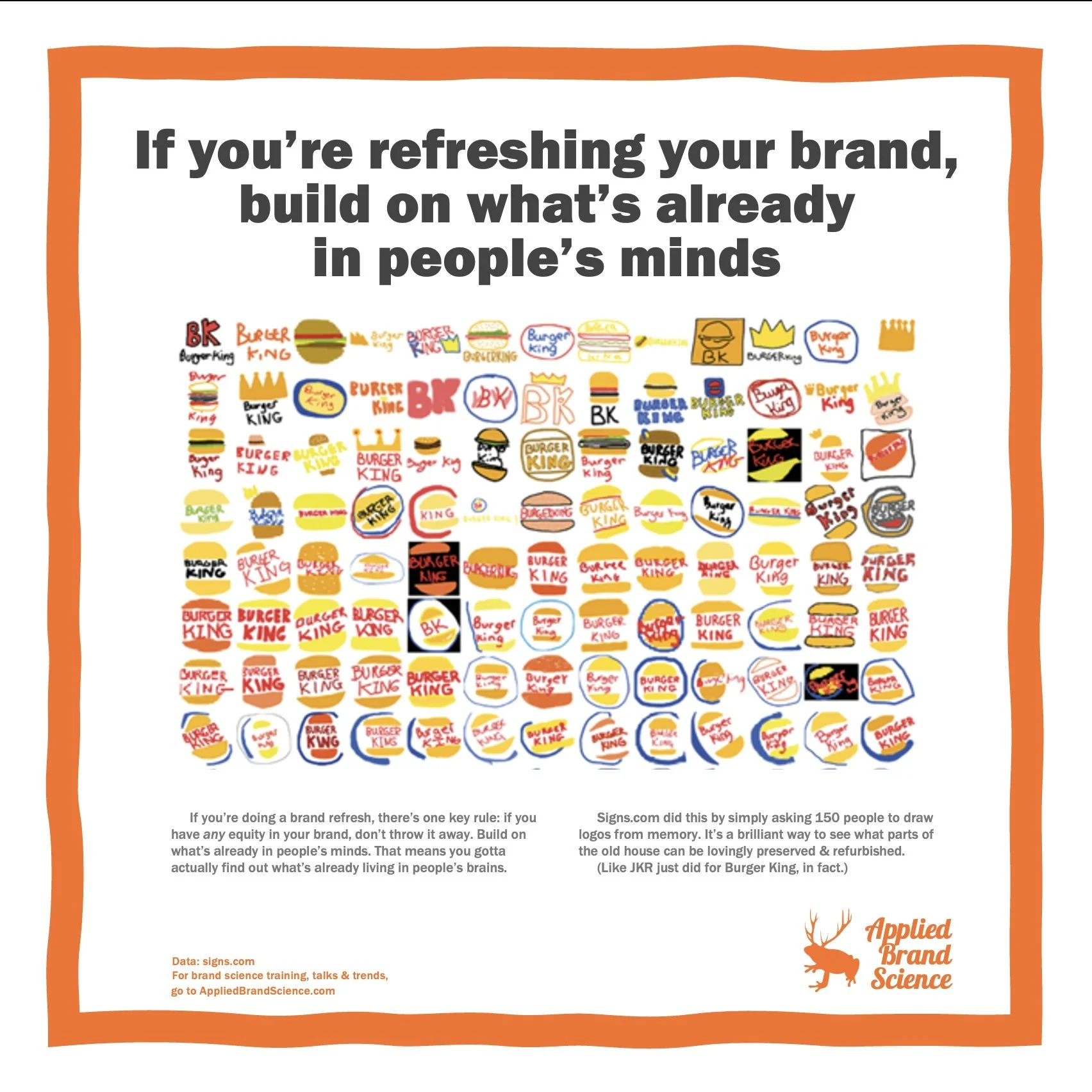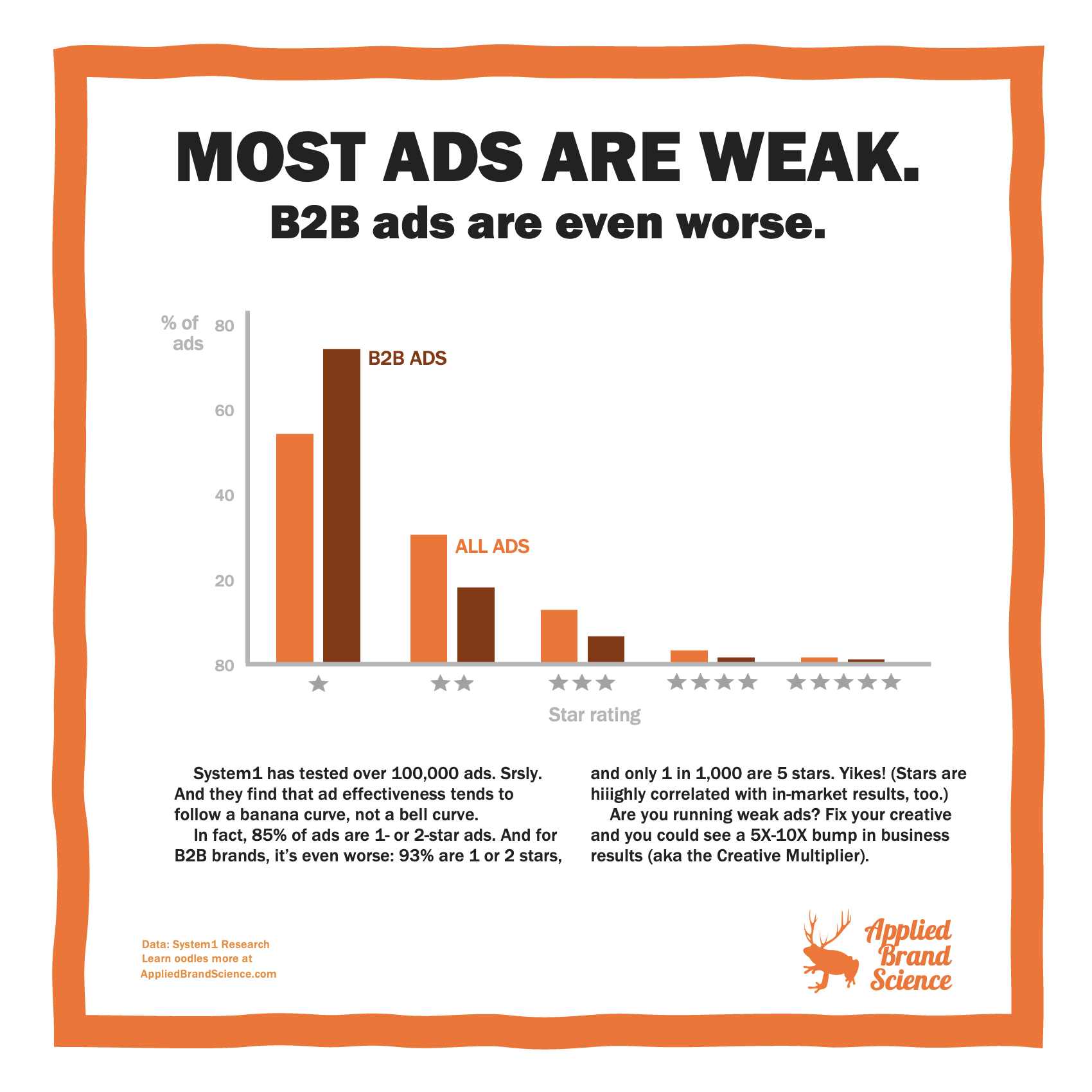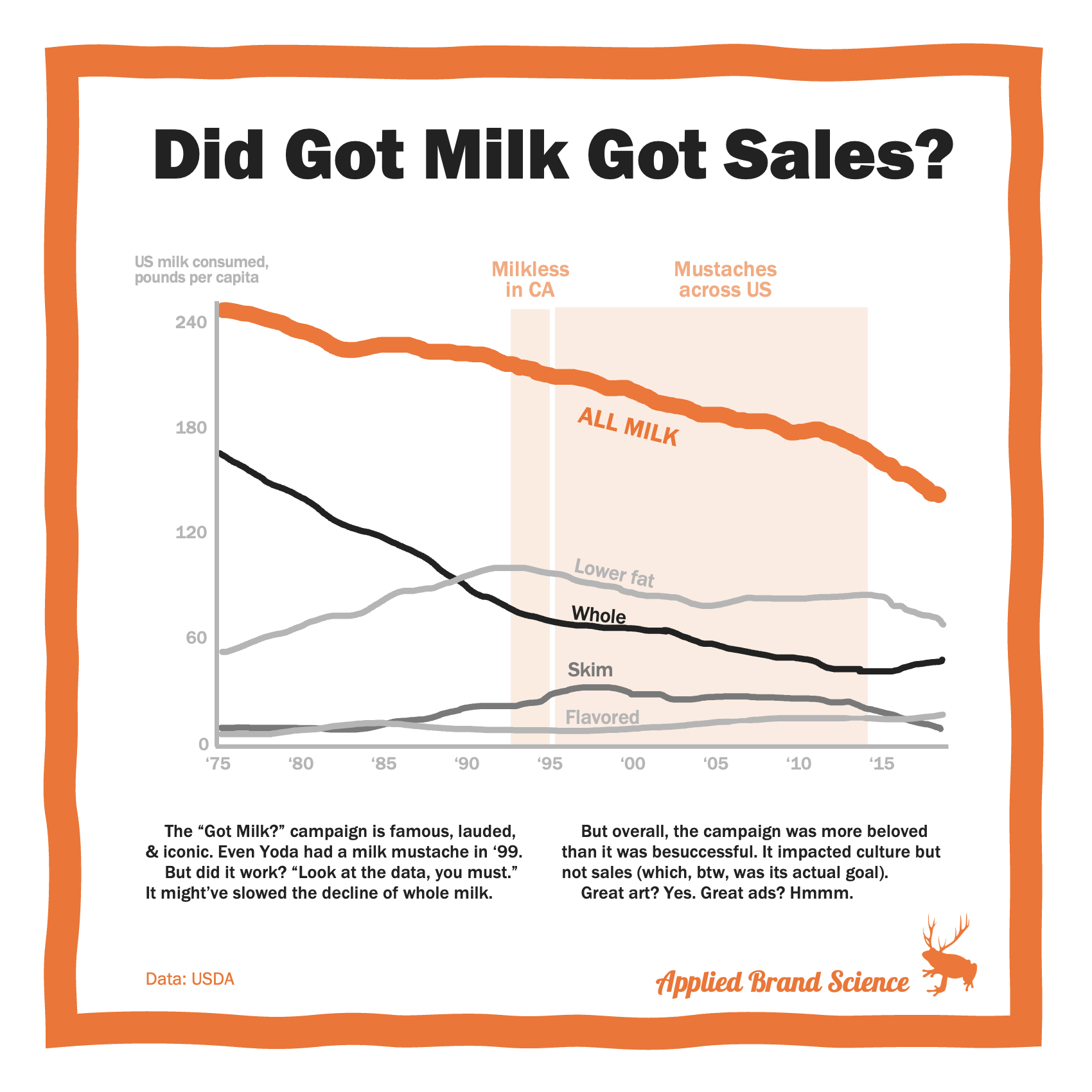
Your source for knowledge, reports, thought leadership, and other tomfoolery. No fluff. No folklore. Just sticky, science-backed brand truth.
The Most ABSurd Blog
Want better recall for your ads?
What does it take for people to actually remember your ad was for you? DVJ Insights tested it with 1,200 viewers—and the results are eye-opening.
Is customer satisfaction overrated?
Does it really matter if customers say they’re ‘highly satisfied’? The data says yes—and also, not really.
Are expensive spirits sold in heavier bottles?
You’d think pricier booze comes in heavier bottles—but across 800 spirits, the correlation between price and weight is basically zero.
Does click-through rate actually matter?
Nielsen analyzed 500 campaigns and found click-through rate predicts… nothing—not recall, awareness, intent, or even ROI.
Are there small brands with high “loyalty”?
Are there brands with few buyers but heavy loyalty? Kantar’s global data says nope—penetration and buy rate move in perfect lockstep.
Running radio ads? Fix your brand linkage!
System1 tested 131 radio ads—and even right after hearing them, 40% of people couldn’t name the brand.
Should you trust in-platform attribution models?
Does last-click attribution actually prove your ads drive sales? Probly not—it’s messy, biased, and confuses correlation with causation.
Do Small Brands Follow the Law of Double Jeopardy?
Big brands win on both penetration and loyalty—that’s Double Jeopardy—but small brands love to wiggle the pattern.
Do platforms “own” their users?
Do social platforms really ‘own’ their users? Nope—cross-usage data shows audiences overlap way more than we think.
Do we “own” our customers?
We like to think our buyers are ours alone—but Coke vs. Pepsi (and pretty much everyone else) proves otherwise.
How Much Do Ad Agencies Love Young People?
Advertising loves to talk diversity—but when it comes to age, agencies still skew young. Really young.
How much organic food do people rilly buy?
Think organic buyers spend all their money on organic? In Germany, only 4% of households put even 20% of their food budget there.
Can music influence what people buy?
Can music really nudge what people buy? A UK wine shop experiment says oui—and ja.
What do you do when no one trusts your profession?
When Brits were asked who they trust most, doctors topped the list—and ad execs came dead last.
What happens when AI eats its own tail?
When AI starts training on its own AI-made junk, the results spiral from smart to straight-up gobbledygook.
How Do Things Actually“Go Viral?”
We think viral hits spread like a cold—but most blow up fast, fade faster, and barely get passed along at all.
Are you dead-set on refreshing your brand?
If you’re refreshing your brand, don’t toss your hard-earned equity—Signs.com’s logo memory test shows why what’s in people’s heads matters most.
Are you tracking trends for long enough?
Covid changed everything—except the parts it didn’t: business creation soared 40%, while consumer spending snapped right back to trend.
How bad is the “average” ad?
System1 tested 100,000 ads and found most are, well, bananas—lots of weak ones, almost no greats, especially in B2B.
Did “Got Milk?” Got Sales?
‘Got Milk?’ ran for decades, featured hundreds of celebs—even Yoda—but did it actually work? Look at the data, you must.

